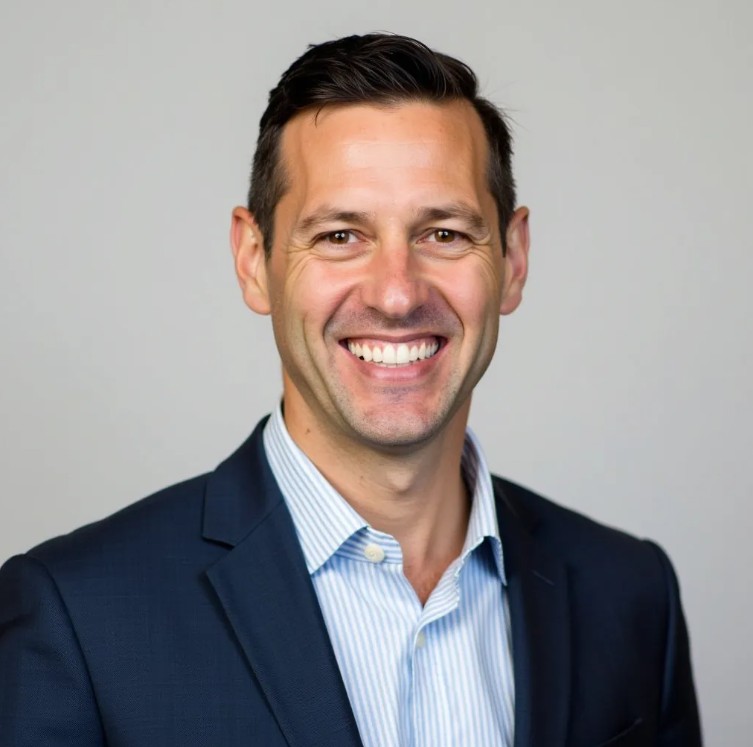
The UAE Supreme Council: Navigating the Emirate’s Highest Authority
Reading time: 12 minutes
Table of Contents
- Introduction to the UAE Supreme Council
- Historical Context and Evolution
- Structure and Composition
- Decision-Making Authority and Processes
- Key Functions and Domain of Influence
- Real-World Impact: Case Studies
- Navigating Challenges and Criticisms
- Comparative Power Dynamics
- Charting the Emirate’s Strategic Course
- Frequently Asked Questions
Introduction to the UAE Supreme Council
Ever wondered how seven distinct emirates function as a unified nation with remarkable political stability? At the apex of the United Arab Emirates’ governmental structure stands the Supreme Council—a governing body that simultaneously embodies tribal tradition and modern statecraft.
The Supreme Council (also called the Federal Supreme Council) operates as the UAE’s highest constitutional authority, wielding extraordinary influence over the nation’s strategic direction, policy frameworks, and international positioning. Far from being a ceremonial institution, it represents the fulcrum upon which the entire federal system balances.
“The UAE Supreme Council represents one of the most successful experiments in balancing traditional leadership models with contemporary governance requirements in the Arab world.” — Dr. Abdulkhaleq Abdulla, UAE Political Science Professor
For investors, policy analysts, diplomats, and citizens alike, understanding this distinctive governance model isn’t merely academic—it’s essential for navigating the UAE’s political landscape and anticipating its evolving priorities and policies.
Historical Context and Evolution
The Supreme Council’s origin story begins with the UAE’s formation in December 1971. Following British withdrawal from the region, Sheikh Zayed bin Sultan Al Nahyan of Abu Dhabi and Sheikh Rashid bin Saeed Al Maktoum of Dubai pioneered a federation that would transform a collection of sparsely populated territories into one of the world’s most dynamic nations.
The initial challenge was clear: how to create a governance structure that preserved each emirate’s autonomy while establishing sufficient central authority. The Supreme Council emerged as the ingenious solution—a body comprising the hereditary rulers of each emirate that would collectively make decisions for the federation while protecting individual emirate sovereignty.
Consider this timeline of pivotal moments:
- 1971: Formal establishment of the Supreme Council with the founding of the UAE
- 1979: Council’s first major constitutional test during leadership transitions
- 1996: Permanent constitution adoption, solidifying the Council’s position
- 2004: Transition following Sheikh Zayed’s passing, demonstrating institutional resilience
- 2022: Smooth succession after Sheikh Khalifa’s death, with Sheikh Mohamed bin Zayed Al Nahyan elected as President
This evolutionary path reflects a governance structure that has matured alongside the nation itself, adapting to changing regional dynamics while maintaining its core structural integrity.
Structure and Composition
Membership Dynamics
The Supreme Council’s composition follows a straightforward yet profound principle: it consists of the rulers of all seven emirates—Abu Dhabi, Dubai, Sharjah, Ajman, Umm Al Quwain, Ras Al Khaimah, and Fujairah. This structure creates an interesting power dynamic that balances historical prestige with contemporary economic weight.
Here’s the fascinating part: While the Council operates on the principle of equal representation (one emirate, one ruler), informal influence often correlates with each emirate’s economic contribution and historical role. This creates a nuanced power distribution that outsiders sometimes misinterpret.
The current membership includes:
- Sheikh Mohamed bin Zayed Al Nahyan (Abu Dhabi) – President of the UAE
- Sheikh Mohammed bin Rashid Al Maktoum (Dubai) – Vice President and Prime Minister
- Dr. Sheikh Sultan bin Muhammad Al Qasimi (Sharjah)
- Sheikh Humaid bin Rashid Al Nuaimi (Ajman)
- Sheikh Saud bin Rashid Al Mu’alla (Umm Al Quwain)
- Sheikh Saud bin Saqr Al Qasimi (Ras Al Khaimah)
- Sheikh Hamad bin Mohammed Al Sharqi (Fujairah)
What makes this structure particularly unique is how it intertwines traditional rulership with modern governance—allowing hereditary leaders to collectively shape a nation consistently ranked among the region’s most innovative and economically dynamic.
Leadership Roles and Responsibilities
Within the Supreme Council, specific leadership positions carry additional weight and responsibilities. The President and Vice President of the UAE are elected from among the Council members, traditionally (though not constitutionally required) coming from Abu Dhabi and Dubai respectively.
The President’s role extends beyond ceremonial duties to include:
- Chairing the Supreme Council meetings
- Signing federal laws, decrees, and international agreements
- Appointing the Prime Minister (with Council approval)
- Serving as Supreme Commander of the UAE Armed Forces
- Representing the UAE in international forums
The Vice President, currently also serving as Prime Minister, oversees the federal government’s day-to-day operations. This creates a practical division of responsibilities that enables efficient governance while preserving the collective decision-making model.
What’s particularly intriguing is the balance between formal constitutional powers and informal influence. As one diplomat who requested anonymity noted, “The Council operates through consensus-building and mutual respect rather than simple majority vote. This emphasizes relationship cultivation and persuasion over procedural mechanics.”
Decision-Making Authority and Processes
The Council’s decision-making process blends traditional Bedouin consultation practices with modern governance needs. Unlike many Western legislative bodies, decisions typically emerge through consensus rather than formal voting. This approach prioritizes unity and collective support over simple majority rule.
For substantive constitutional matters and key federal legislation, unanimous agreement is required, effectively giving each emirate veto power on foundational issues. For other matters, a majority (5 of 7) that must include Abu Dhabi and Dubai is sufficient—a pragmatic recognition of these two emirates’ disproportionate economic contributions (collectively representing approximately 90% of the UAE’s GDP).
The Council meets typically four times annually in formal sessions, though extraordinary sessions can be called for urgent matters. These meetings rotate between emirates, symbolizing federal unity while acknowledging each emirate’s importance within the collective.
Let’s examine a real-world example of this decision-making in action:
In 2009, during the global financial crisis, Dubai faced severe liquidity challenges related to Dubai World’s debt obligations. The Supreme Council convened an extraordinary session, ultimately resulting in Abu Dhabi providing substantial financial support—a decision that transcended pure economic calculations to prioritize federal stability and solidarity.
Key Functions and Domain of Influence
National Policy Formation
The Supreme Council’s policy influence extends across virtually all domains of national significance. Its primary functions include:
- Constitutional Authority: Ratifying constitutional amendments and interpreting constitutional provisions
- Federal Policy Direction: Setting broad strategic policy frameworks that guide ministerial initiatives
- Leadership Selection: Electing the UAE President and Vice President for renewable five-year terms
- Approval Authority: Confirming cabinet appointments and key federal officials
- Legislative Oversight: Reviewing and approving federal legislation before promulgation
What’s particularly fascinating is how the Council balances centralized direction with emirate autonomy. Rather than micromanaging policy implementation, it establishes guiding frameworks while preserving significant autonomy for individual emirates in many domains.
Consider the UAE’s economic diversification initiatives. While Vision 2021 and now Vision 2030 provide unified national directions endorsed by the Supreme Council, implementation approaches vary significantly between emirates. Abu Dhabi emphasizes investments in renewable energy and sustainable technologies, while Dubai focuses on tourism, financial services, and trade infrastructure.
“The genius of the UAE governance model lies in how it creates space for emirate-level experimentation within a coherent national framework—allowing each emirate to leverage its unique advantages while contributing to collective progress.” — Dr. Narayanappa Janardhan, Senior Research Fellow, Emirates Diplomatic Academy
International Relations
The Supreme Council’s influence extends substantially into international affairs, with authority over:
- Declaring war and concluding peace
- Ratifying international treaties and agreements
- Establishing the broad contours of foreign policy
- Approving diplomatic appointments and representations
- Determining positions on regional conflicts and initiatives
Recent years have witnessed several pivotal foreign policy decisions emerging from the Council, including the normalization of relations with Israel through the Abraham Accords, participation in the Saudi-led coalition in Yemen, and positioning on Gulf Cooperation Council dynamics.
What makes the UAE’s international approach distinct is how it balances traditional regional alignments with increasingly independent positioning. The Supreme Council has gradually shifted the federation toward a more assertive and self-directed foreign policy that prioritizes national interests while maintaining key alliances.
Real-World Impact: Case Studies
Case Study 1: National Economic Transformation
In 2010, the Supreme Council approved the UAE Vision 2021, a comprehensive national agenda aimed at transforming the country into one of the world’s most advanced nations. This initiative illustrates the Council’s capacity for long-term strategic planning.
The results speak volumes: By 2021, the UAE had:
- Diversified its economy, reducing oil contribution to GDP from 43% to approximately 30%
- Improved its World Economic Forum Global Competitiveness ranking to 25th globally
- Established world-class infrastructure across multiple sectors
- Created one of the region’s most dynamic innovation ecosystems
The Council’s willingness to embrace ambitious transformation while preserving social cohesion demonstrates its distinctive leadership approach—combining bold vision with pragmatic implementation.
Case Study 2: COVID-19 Response Coordination
The pandemic provided a real-time stress test for the Supreme Council’s crisis management capabilities. In early 2020, as COVID-19 spread globally, the Council established a unified national approach while allowing tailored emirate-level implementation.
This balanced response included:
- Coordinated national testing and vaccination strategies
- Centralized economic stimulus packages totaling over AED 388 billion
- Emirate-specific lockdown and reopening protocols based on local conditions
- Rapid development of technological solutions for contact tracing and monitoring
The UAE ultimately achieved one of the world’s highest vaccination rates (over 98%) while limiting economic damage—showcasing the Council’s ability to navigate complex crises through collaborative leadership.
Navigating Challenges and Criticisms
While the Supreme Council has demonstrated remarkable effectiveness, it faces several ongoing challenges and criticisms:
Transparency Considerations
The Council’s deliberative processes remain largely private, with limited public visibility into debate dynamics and decision rationales. This approach aligns with regional governance traditions but creates challenges for those seeking to understand or predict policy directions.
Representative Diversity
The Council’s composition—exclusively male hereditary rulers—raises questions about demographic representativeness in an increasingly diverse and young nation. While the UAE has made progress in incorporating women and younger voices in other governance bodies, the Supreme Council remains traditional in its composition.
Succession Planning
While the Council has thus far navigated leadership transitions smoothly, the system’s reliance on hereditary succession creates inherent uncertainties about future transitions, particularly as federation dynamics evolve over generations.
Balancing Centralization and Autonomy
As the federation matures, tensions occasionally emerge between centralization needs and emirate autonomy preferences. The Council must continuously calibrate this balance to maintain both cohesion and dynamism.
Comparative Power Dynamics
The following visualization illustrates the relative influence within the Supreme Council across multiple dimensions:
| Emirate | Economic Weight (% of UAE GDP) | Population (% of UAE) | Territory Size (% of UAE) | Federal Budget Contribution (%) |
|---|---|---|---|---|
| Abu Dhabi | 60% | 34% | 87% | 78% |
| Dubai | 30% | 36% | 5% | 18% |
| Sharjah | 5% | 16% | 3.3% | 2% |
| Other Emirates | 5% | 14% | 4.7% | 2% |
Economic Contribution to UAE by Emirate
This visualization highlights an essential aspect of the Supreme Council’s dynamics: the significant economic imbalance between member emirates contrasts with the formal equality within the Council structure. This creates a governance system that balances respect for historical identities with pragmatic recognition of economic realities.
Charting the Emirate’s Strategic Course
Looking ahead, the Supreme Council faces several critical strategic questions that will shape the UAE’s future trajectory:
Economic Transformation in a Post-Hydrocarbon Era
With climate change concerns accelerating the global energy transition, the Council must navigate a delicate economic evolution—particularly for Abu Dhabi, whose prosperity remains significantly linked to hydrocarbon resources. The Council’s strategic vision documents increasingly emphasize knowledge economy development, renewable energy leadership, and advanced technology sectors as pathways forward.
Regional Power Recalibration
As regional dynamics shift with Iran’s evolving role, Saudi domestic reforms, and changing U.S. commitments to the region, the Supreme Council must continuously recalibrate the UAE’s positioning. Recent years have seen a more independent and assertive foreign policy emerge, suggesting the Council is preparing for a regional order where the UAE maintains greater strategic autonomy.
Social Cohesion in a Globalized Context
With expatriates constituting approximately 88% of the UAE population, the Council faces the ongoing challenge of maintaining national identity while embracing global connectivity. Initiatives like the expanding cultural district on Saadiyat Island suggest a strategic approach that incorporates global perspectives while celebrating Emirati heritage.
Your Strategic Compass: Navigating the UAE’s Power Center
For investors, diplomats, analysts, and citizens, understanding the Supreme Council offers an invaluable strategic compass for navigating the UAE’s political and economic landscape. Consider these practical applications:
- Policy Anticipation: Track Council members’ public statements and priorities to anticipate policy directions before formal announcements
- Investment Alignment: Align business and investment strategies with national priorities articulated through Council-approved vision documents
- Relationship Cultivation: Recognize the importance of institutional relationships that respect the Council’s role while engaging with relevant implementation bodies
- Risk Assessment: Incorporate Council dynamics in political risk assessments, particularly regarding succession planning and inter-emirate coordination
The Supreme Council’s distinctive blend of traditional authority and modern governance creates both challenges and opportunities. Those who appreciate its nuanced role can navigate the UAE’s landscape with greater confidence and effectiveness.
As the UAE continues its remarkable development journey, the Supreme Council’s capacity to balance stability with innovation, tradition with progress, and unity with diversity will remain central to the nation’s success. For a country that has consistently defied conventional development trajectories, this highest governing body embodies the UAE’s unique approach to nation-building—one that continues to reshape our understanding of what governance can achieve in the 21st century.
How will you adapt your strategy to align with the priorities and dynamics of this influential institution? The answer may well determine your success in engaging with one of the Middle East’s most dynamic and consequential nations.
Frequently Asked Questions
How often does the UAE Supreme Council meet, and are these meetings public?
The Supreme Council typically meets four times annually in regular sessions, with additional extraordinary sessions as needed for urgent matters. These meetings rotate between the seven emirates, symbolizing federal unity. The meetings themselves are not public, and proceedings remain largely private. However, key decisions and outcomes are generally announced through official channels following the meetings. The private nature of deliberations aligns with regional governance traditions but creates challenges for those seeking to understand internal decision dynamics.
How does the Supreme Council’s authority interact with the Federal National Council (FNC)?
The relationship between these bodies represents a carefully calibrated division of responsibilities. The Supreme Council holds ultimate constitutional authority and sets broad policy direction, while the Federal National Council serves primarily as a consultative body representing citizens’ concerns. The FNC reviews proposed federal legislation and can suggest amendments, but lacks formal veto power. In recent years, the FNC’s role has gradually expanded, with increased electoral components and broader legislative review responsibilities, though the Supreme Council remains the preeminent decision-making authority. This creates a governance system that incorporates representative elements while maintaining traditional leadership structures.
What happens when there is disagreement among Supreme Council members?
When disagreements emerge, the Council employs several approaches to reach resolution. For most matters, consensus-building through private discussions precedes formal meetings, allowing differences to be addressed before official sessions. On substantive constitutional matters requiring unanimity, negotiations may extend over multiple sessions until agreement is reached. For other matters requiring only a majority that includes Abu Dhabi and Dubai, compromises often involve policy adjustments or implementation flexibility at the emirate level. Throughout this process, preserving the federation’s stability and unity typically takes precedence over individual positions, creating strong incentives for compromise. This consensus-oriented approach has contributed significantly to the UAE’s political stability compared to other regional states.

Article reviewed by Daniel Costa, Agribusiness Analyst | Studying UAE-Brazil Trade Flows, on May 15, 2025
